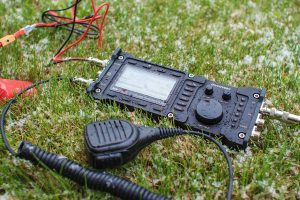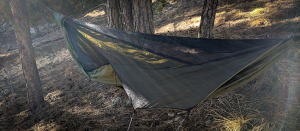Do I Need a Level on my Sight?
2 min read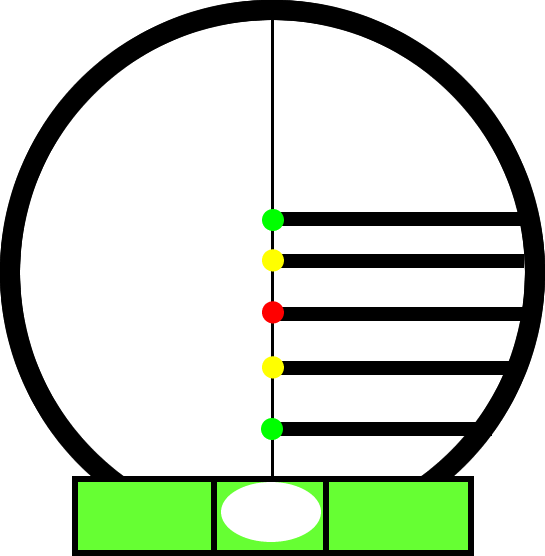
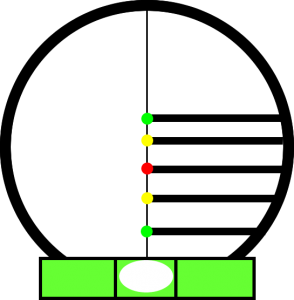 While, these are just a few things to consider when getting ready for backcountry bowhunting, what it really comes down to is making the shot. A couple of rather critical issues the backcountry bowhunter should ponder include: canting your bow and up/downhill aiming when your target does not present you will a shot on level ground.
While, these are just a few things to consider when getting ready for backcountry bowhunting, what it really comes down to is making the shot. A couple of rather critical issues the backcountry bowhunter should ponder include: canting your bow and up/downhill aiming when your target does not present you will a shot on level ground.
Shooting target archery has opened my eyes to the use of a level on all my sights. A level will prevent me from canting (tilting) my bow to the left or the right. Some wonder just how much difference a level makes. Let me give you an example of just how important having a level on your sight, and using it, can be.
While preparing for a tournament not too long ago, I noticed that my arrows were impacting consistently to the right about three inches. I’d made no change to any of my equipment, so where was this problem coming from? I put my bow on a device used to see if the level in my sight was actually square with my bow. I found that the sight had come loose and was off by only half a bubble, which was causing me to cant my bow very slightly to the right. Half of a bubble is almost indiscernible while at full draw. Consider this, a three-inch error at twenty yards equates to six inches at forty yards. An error of six inches can mean a miss, or worse, a non-fatal wound. In my opinion, the use of a level on your sight is essential.
Third Axis

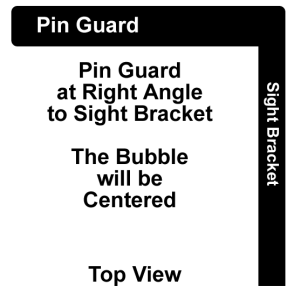 Now that you’ve made sure your sight is square with your bow, it’s time to consider checking your 3 rd axis. The 3 rd axis references whether the sight pin housing is square to your bow when aiming up or down hill. To the LEFT is a diagram which depicts a sight pin housing which is square.
Now that you’ve made sure your sight is square with your bow, it’s time to consider checking your 3 rd axis. The 3 rd axis references whether the sight pin housing is square to your bow when aiming up or down hill. To the LEFT is a diagram which depicts a sight pin housing which is square.
To the RIGHT is a diagram which depicts a sight pin housing which is NOT square to the bow. For a right-handed archer aiming downhill, the resulting sight picture would result in the 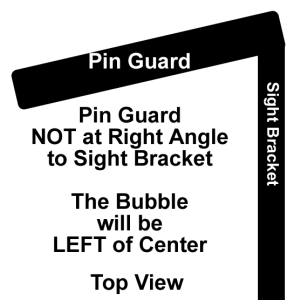 bow being canted to the left in an attempt to center the bubble. A bow canted to the left, when aiming downhill, would yield in the arrow impacting to the left. If the archer is aiming uphill, the bubble would be to the right side of the level resulting in a bow canted to right in order to center the bubble, causing the arrow to impact to the right.
bow being canted to the left in an attempt to center the bubble. A bow canted to the left, when aiming downhill, would yield in the arrow impacting to the left. If the archer is aiming uphill, the bubble would be to the right side of the level resulting in a bow canted to right in order to center the bubble, causing the arrow to impact to the right.
As you can see, a sight, either without a 3rd axis or an improperly adjusted 3rd axis, can cause radically changing impact points depending if you’re aiming up or downhill and depending on how steep of angle the shot is being made.

